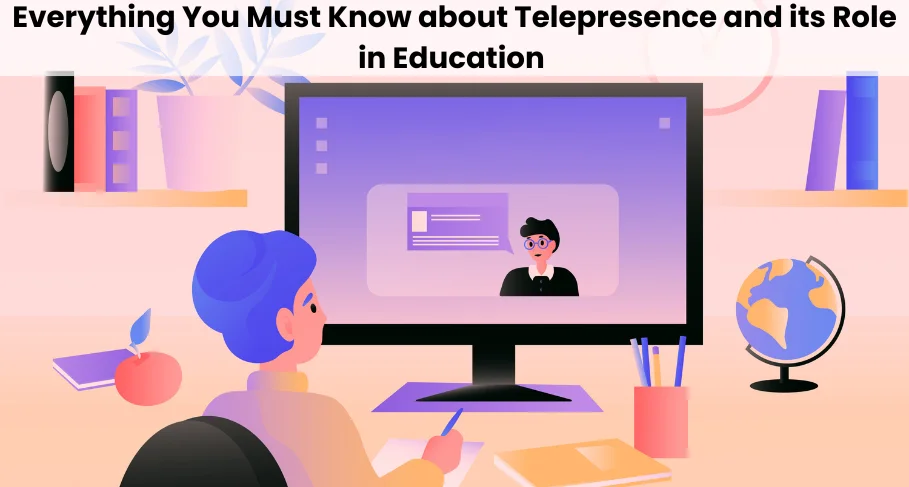The term “telepresence” was coined by Marvin Minsky, co-founder of the Artificial Intelligence Laboratory at the Massachusetts Institute of Technology (MIT) and one of the pioneers in this area of research, in 1980 about teleoperation systems for manipulating remote physical objects (Rae et al., 2015).
Telepresence is the feeling of being fully present at a remote location from one’s physical location. It creates a virtual or simulated experience for the robot operator (El-Gayar et al., 2005).
Telepresence is a broad and complex term for various phenomena involving embodied, virtual presence in mediated environments (Friesen, 2014; Levinsen et al., 2012). From a phenomenological perspective, Telepresence can be understood as “the experience of presence in an environment using a communication medium” (Steuer 1995 in Dolezal 2009) or, conversely, as “a technology that allows the projection of a person to a remote environment” (Draper, 1998).
As a concept, Telepresence has historically been linked to the use of robotics and virtual worlds; however, it also interacts significantly with local physical spaces, as will be seen from the examples below.
A Telepresence Robot (TPR) is a wheeled, moving device that can be controlled by a remote. It has interactive features like motion control supported by sensors, a screen, speakers, microphones, cameras, and other features for distant communication and collaboration. A remote user can log in and control the robot through smartphones, tablets, or PCs while viewing the onsite environment on a screen. The users’ faces are simultaneously projected live onto the robot’s screen, creating distant Telepresence that enables onsite staff to interact with the user face-to-face.
A classic example comes from the popular American TV sitcom The Big Bang Theory, which features an episode where Sheldon builds a machine he calls the “Shelbot” to utilize telepresence to isolate himself in his apartment while still interacting with his friends.
Telepresence Robot in Education
Students with chronic illnesses, neuromuscular issues, or dangerous diseases may find it difficult to attend classes. While standard video conferencing services, which facilitate conversation via monitor screens, are preferred in certain situations, TPRs can offer a more socially engaged experience.
These remote-controlled TPRs allow children to control an anthropomorphic body in the classroom and remain physically embodied and socially connected. Several research studies suggest that these TPRs can quickly establish access to education and create a connection with the child’s school environment. However, research in this area mainly consists of small-scale exploration studies.
Implementing TPRs in academic institutions requires an alignment of expectations between stakeholders, such as healthcare professionals, teachers, parents, school leaders, and children. There is a possibility that clear expectations can result in disappointment for both children and teachers, making it essential to explore expectations for TPRs as a social and educational tool for children with mobility, travel and significant health issues, specifically.
What are the Benefits of Telepresence in Education?
• Facilitates virtual classroom participation for students with health, mobility, or travel issues.
• Provides access to high-quality educational resources and diverse teachers.
• Facilitates language learning and intercultural exchange, preparing learners for future workplaces.
• Replicates real-world learning experiences, outspreading face-to-face instruction to remote areas.
What are the Limitations of Telepresence in Education?
- Academic institutions may experience difficulty in functionality when facilitating telepresence in education, as they must depend on hardware, software, and network quality. Other potential issues in its implementations include poor internet bandwidth, low quality of audio and video, technical glitches, and more.
- It may lead to educational and psychological challenges, affecting the presence and social interaction among students and teachers. It may also cause anxiety, isolation, or detachment issues in students.
- Maintenance and management challenges arise due to additional device installation, operation, and resources. This poses challenges for remote users’ scheduling, coordination, and supervision and also affects privacy, security, identity, and responsibility.
How to Implement Telepresence in the Classroom?
Let us delve deeper into each of the strategies for implementing Telepresence in the classroom:
Involving Students in Dialogic Instruction
- Telepresence promotes interactive classrooms.
- Use Student Response Systems tools like Desire2Learn and Polleverywhere.
Encourage Participation
- Use OneDrive for introductory activities.
- Start sessions with Telepresence-showcasing exercises.
Collaboration on the Cloud via Tablets and Whiteboards
- Utilizing smartphones, tablets, and cloud-based whiteboarding tools facilitates synchronous idea sharing, making records accessible beyond class.
- It also enables collective problem-solving through brainstorming exercises.
Hybrid Model Course Development
- A hybrid course proposes a hybrid model that integrates Telepresence and online learning and provides an engaging learning environment.
Restructuring Group Talks
- Utilize tools like MS Teams and Zoom for personalized connections.
- Initiate significant group discussions and break them down discussions for focused breakout sessions.
Online Collaborative Meetings in Colleges
- Telepresence can help in high-quality training.
- Facilitates collaboration between coworkers and students, promoting cooperation and information exchange.
Invite Experts and Special Guest Speakers
- Telepresence can eradicate the financial and administrative obstacles of having experts and guest speakers from across the globe and help through a virtual presence in real time.
Integrating Internship for Students and Service Learning
- Builds relationships amongst students located in different locations by utilizing Telepresence.
- Encourages group discussions, self-reflection, and cooperation amongst students participating in service-learning and internship programs.
Socratic or Seminar Approach to Engage Students
- Encourages thoughtful discussion by posing open-ended queries.
- Use the Socratic Seminar technique to delve deeper into concepts and principles covered in the course material.
Implementing Situated Learning and Coaching
- Use top-notch audio and video in Telepresence to provide a more realistic and immersive learning environment.
- The technology enables students to obtain guidance and evaluations from experts from a distance, eliminating geographical limitations.
By implementing these methods, teachers can use Telepresence to create dynamic, engaged, and productive learning environments that transcend traditional classroom walls.
Reference links:
“Casco Bay Weekly: 4 August 1994.” 1994, https://core.ac.uk/download/236779838.pdf.
Meyer, Bente. “Telepresence With iPads: A Matrix for Collaboration in Lower Secondary School.” European Conference on E-Learning, vol., no. , 2015, pp. 364-XV.
(PDF) Applying Telepresence to Education (researchgate.net)
https://link.springer.com/article/10.1007/s10639-023-11782-
